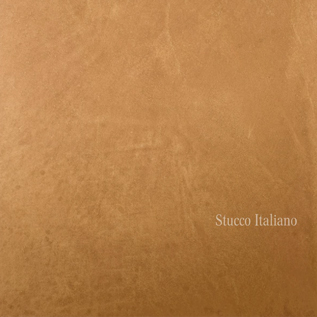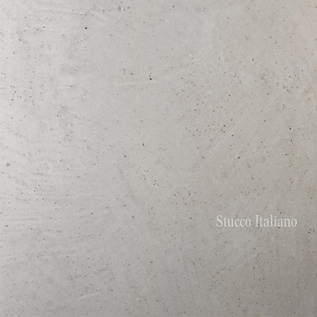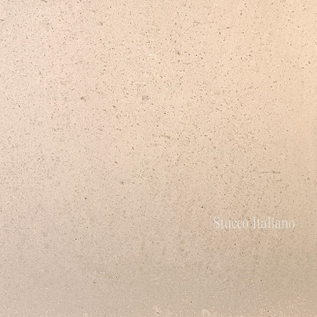Natural Marmorino for Floor - Pastellone
Overview
There are many examples of lime-based plaster floor applications in keeping with the Venetian tradition. Starting with this antique tradition, we have combined an application technique with a new material to achieve an excellent compromise. This solution retains the esthetics of antique marmorino while adding the durability that modern day living demands.
This finish is suitable for use in areas where you want natural materials and simple lines. For this reason, it’s ideal for a miminalist environment because of smooth, uninterrupted continuity.
Natural Marmorino is suitable for any area
*Bathrooms, kitchens, stairs, hallways, or bedrooms. Care must be taken to avoid damaging it as for any other floors made of wood, tile or soft stone. It has a naturally non-slip surface, but special anti-slip treatments are possible. It has a smooth, lightly polished finish which has a transparent look. Cleaning is extremely easy.
*The final effect depends on the protective treatment. Linseed oil gives it the most natural appearance and is the most common final treatment. A polyurethane varnish can give the surface a stronger, more durable satin or glossy finish which is more difficult to scratch; however, the presence of varnish may look unnatural to the trained eye.
This product has a Leed certification for being made with 29% recycled material
Natural Hydraulic Lime and cement based Finish for Floor
The recipe for Marmorino for Floors comes from an antique recipe, “Pastellone Veneziano”. Pastellone was, in fact, the application of Classic Venetian Marmorino onto floors. Examples can be found in Venice and throughout the Veneto Region. Our Pastellone is made stronger by using Hydraulic Lime and acrylic binders. The material which is white, can be tinted to any color using dyes which are compatible with lime.
Details
The material comes in two grades: medium and fine. The material with coarser particles ( the "medium") is applied in the first and second coats and that with the finer particles is applied in the third coat ( some people prefer to apply the "Medium " in the first only and the "Fine" in the second and the third).
Finely filter natural hydraulic lime, grains of marble (special powdered marble granules sifted and selected according to granule size of 0,0 to 0,8 mm = 0.0 - 0.030 inch) for first coat and, 0,0 to 0,5 mm. (0,0 to 0.17 inches) for the second and last coat, and special additives (no more than 0,6 % total in volume).
Can be used together with our AQ-A, acrylic binder for a stronger finish.
The ideal substrate is plaster made of sand and cement, but with the right preparation it can be applied to any surface, such as concrete or existing ceramic or marble flooring. It can be applied on plasters over flooring heating system. It is not recommended to use it in public areas or places where there is a lot of traffic. It is a finish which can be compared to natural hard wood floors, and therefore indicated for use in private areas which won’t be subject to heavy use.
INSTRUCTION FOR APPLICATION
Application on the ideal substrate: plaster made of cement and sand. A water-based primer, like our “Normal Primer”, is applied with a roller on a substrate free of dirt and grease.
If you have pre-colored material already in your warehouse, use this for all three coats. If you have white material, use this for the first coat in order to simplify preparation; it saves on time and colorant.
Remember that Marmorino for Floor/Pastellone, comes in two sizes: Medium for the first coat and Fine for the second and third coats.
Mix the material (medium Size) with enough AQA additive to make the mixture dense enough to apply easily with a metal trowel. Normally you need about 450 ml. of AQA for 1 kg. of marmorino powder.
Spread the first coat evenly over the entire surface, finishing, obviously, at doorway. You will need approximately 0,9 / 1,1 kg of material per 1 square meter. Let it dry until the next day.
If you have colored material already in your warehouse, it will be much simpler to apply the second and third coats. If you have to add color to the material there are three possibilities:
- Color the material with powder colorants before adding the water ( or the AQA). You have to figure out how much colorant to add to each container first which involves a long process to establish how much colorant is needed to obtain the color you want.
- Color the white material after you have mixed it with water (AQA). You still have to do color tests beforehand to be sure of the exact weight of liquid colorant you will use.
- To tint the liquid additive AQA if you are going to improve your application with it.
Solutions 2 and 3 are the more practical.
In all the cases, the colorant must be one which is resistant to the alkaline in the cement.
Mix up the enough material for the second coat (0,7 kg. of powder per square meter) - the Fine Marmorino for Floor - and using a metal trowel, start applying it. Have a clear plan of how you are going to apply it in 40-50 cm. strips, beginning at the point farthest from the door.
Be careful to apply it uniformly and smoothly.
After you finish applying the second coat, you’ll have time to prepare the material for the third coat, or you had enough from the second. Note that the third coat can be applied with the same material of the second one. It is difficult to know how long to wait before applying the third coat because it depends a great deal on the air temperature and humidity. In general, the moment is right when you can comfortably step on it which could be after 25 minutes or up to an hour. It is recommended to go barefoot or wear socks that won’t leave their imprint on the material.
Apply the third coat with the metal trowel as you would a normal marmorino, but without press too much since you will make mre smooth the following day using the sand paper. But if you want to make a more smooth finish at this stage, you can complete the whole floor and than, when you can step on it, come back using a spray bottle with water and working in small areas spray the water and make smooth using both a metal trowel and a plastic trowel. The metal trowel can leave dark marks like it does when you scrape metal over cement. This is more visible with lighter colors. Because of this you have to use the the plastic trowel to finish smoothing it out. You will notice that on a floor, you don’t need to finish it as smooth and polished as you would on a wall. Besides it’s not possible to return to polish it after 10 or 15 minutes, as you do on a wall. BE CAREFUL NOT TO LEAVE DROPS OR EXCESS OF WATER ON THE FLOOR OR THEY WILL MAKE LIGHTER MARKS !
The day after the floor can be sanded with a sander machine. This treatment is done to make the surface more smooth and to increase the movement of dark and light marks. A P 180, P120 or P100 paper can be used. The sand paper do not scratch the surface since it is very hard, but just polish it.
NOTE: the easiest and fast way to make this finish requires the use of a sanding machine with disks of metallic net. Apply the last coat without pressing too much, just having care to make the floor quite even, Than, the day after, sand all the surface with a sanding machine with the metallic mesh P100. Sanding with the metallic disk helps make the surface smooth also if the last coat was not very well done and uniforms the surface. This way of application reduces the time of work and gives a more even finish.
If you want to have more movement you can apply one or more layers of a colored solution: prepare our primer diluted 1 part of primer and 13 of water. Tint it in the needed tone and, after made proper test apply this solution all over the floor using sponges or better normal cloths. In this way where you leave more tinted solution you get more dark getting “shadows of color”. Please, be careful to make tests before tinting the floor.
Create an environment with the right humidity because the slower the material dries, the stronger it becomes. The floor shouldn’t be walked on for several hours and in any case should be protected until you apply the final protection. Without the final protection, the floor can always be easily stained.
After 5-10 days (the longer, the better), you can apply the final treatment which can be done in two ways:
With the application of a single or dual component polyurethane for which we can give you application instructions. This is usually applied with a roller. It could be preceded by a waterproofing and stabilize treatment made with our Primer Normal diluted 1:14 with pure water and applied in two coats. This treatment makes easier the application of the varnish and reduces the absorbency of the floor. After that you can apply two coats of Floor Wax choosing your favorite finish: Matt, Satine or Glossy
With linseed oil. Pour it on the floor and spread with a soft, absorbent cloth. This will be done two more times, allowing the first coat to dry at least 12 hours. Note that to use linseed oil your floor has to be very dry since the presence of water could causes modification of the oil, the same process which happens when we make soap from oil!! It means white marks on the floor.
For Floor Tricks of the trade and c. please see the tech sheet.
- If you are working on a new concrete substrate, be sure that it is at least a month old and that it is completely dry. It’s possible for cracks to appear in new concrete the first 2-3 weeks after laying the concrete.
- During application, the marmorino can be directly poured from the bucket onto the floor and then spread with a trowel.
- During application, it is useful to have a light source close to and parallel to the floor. Be careful, however, that this doesn’t dry out the material too much before applying the third coat.
- This material can be used to cover concrete bathtubs and shower stall walls as a substrate. Naturally, they would have to be well-treated with good waterproofing or our P.U. varnish.
- If you want to apply it on ceramic or marble floors you have to roughen the tiles using a sander (better if it has a disk of diamond); then apply a special adhesive plaster being careful to cover up the lines between the tiles. Thisplaster is made using the normal Marmorino for Floors that you used for the first coat together by adding 5% of the additive SAA, the Strong Adhesion Agent, to the Marmorino for Floors.
- Before the final treatment of the floor, small imperfections can be removed using sandpaper.
- Keep in mind that when preparing the colour that it darkens considerable after applying the oil, which we call the “wet look”.
- Your customer should know that dropping heavy objects on the surface can cause small dents, exactly as happens with wood flooring.
- It is possible to do touch-ups when necessary. To do this, we advise keeping some of the powdered colored material in a well-sealed container. Use a container which is just big enough so the material is exposed to little air. Doing this should allow you to keep the material ready to use for many years.
- If the substrate is cracked you have to substantiate that they are cracks due to the curing process and not due to settlement. If the latter is the case, your customer should be advised that they will be responsible for any reappearance of cracks. If you wish, the application of a mesh fixed to the substrate using the Marmorino for Floors gives a great result against cracks. In our experience it almost always works, so we strongly suggest using it even though we cannot guarantee success.
- If you have to work in two adjacent rooms, it is advisable to create a natural break at the doorways. You can’t, in fact, work in 2 or 3 rooms at a time without having breaks. One way to deal with this is to put a strip of metal (aluminum, steel or brass) fixed with epoxy resin, into the concrete substrate which will act as a divider. This strip of metal should rise above the surface of the concrete 1.5 - 2 mm. (the eventual thickness of your marmorino coating, so that just the top of the strip will remain visible)
For Floor Tricks of the trade and c. please see the tech sheet.*









